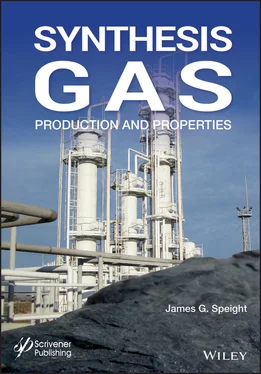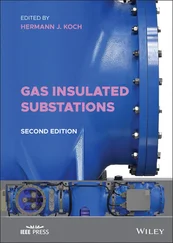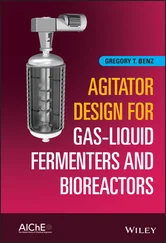1 ...8 9 10 12 13 14 ...42 Worldwide biofuels production is still small at approximately 70 billion (70 x 10 9tons) oil equivalent. With the volatility of crude oil prices of crude oil, the relative competitiveness of renewable and alternative fuels is drastically improving. Further, technological advances in the alternative renewable energy areas as well as public awareness backed by strong governmental supports and incentives, make the outlook of the alternative and renewable energy very promising (Energy Security Leadership Council, 2013). There are seven countries that can be considered the leaders in biofuels (particularly bioethanol) production. The leaders are (as a percentage of the total production): United States (43.5%), Brazil (24%), France (3%), Germany (4%), Argentina (3%), China (3%), and Indonesia (2.5%). But this still represents minor amounts of the total energy consumption in these countries.
Ethanol (bio-ethanol) from corn has been used in an accelerated pace as gasoline blending fuel as well as a new brand of fuel E85 , which contains 85% ethanol and 15% gasoline. The majority of the gas stations in the United States supply E85 fuels regularly and many automakers are offering multiple lines of automobiles that can be operated on either conventional gasoline or E85. This not only contributes to cleaner burning fuels but also supplements the amount of gasoline sold.
One extremely important aspect of biomass use as a process feedstock is the preparation of the biomass (also referred to as biomass cleaning or biomass pretreatment), the removal of any contaminants that could have an adverse effect of the process and on the yields and quality of the products. Thus, feedstock preparation is, essentially, the pretreatment of the biomass feedstock to assist in the efficiency of the conversion process. In fact, pretreatment of biomass is considered one of the most important steps in the overall processing in a biomass-to-biofuel program and can occur using acidic or alkaline reagents (Table 1.3) as well as using a variety of physical methods (Table 1.4) and the method of choice depends very much upon the process needs. With the strong advancement in developing lignocellu-lose biomass-based refinery and algal biomass-based biorefinery, the major focus has been on developing pretreatment methods and technologies that are technically and economically feasible (Pandey et al. , 2015).
Table 1.3Acidic and alkaline methods for biomass treatment.
| Method |
Conditions |
Outcome |
| Acid based methods |
Low pH using an acid (H 2SO 4, H 3PO 4) |
Hydrolysis of the hemicellulose to monomer sugars |
| Minimizes the need for hemicellulases |
| Neutral conditions |
Steam pretreatment and hydrothermolysis |
| Solubilizes most of the hydrocarbons by conversion to acetic acid |
| Does not usually result in total conversion to monomer sugars |
| Requires hemicellulases acting on soluble oligomers |
| Alkaline methods |
Leaves a part of the hydrocarbon in the solid fraction |
| Requires hemicellulases acting hydrocarbons |
Table 1.4Summation of the methods for the pretreatment of biomass feedstocks.
| Physical methods |
Miscellaneous methods |
| Milling: |
Explosion: * |
| - Ball milling |
- Steam, NH 3, CO 2, SO 2, Acids, Alkali |
| - Two-roll milling |
- NaOH, NH 3, (NH 4) 2SO 3 |
| - Hammer milling |
Acid: |
| Irradiation: |
- Sulfuric, hydrochloric, and phosphoric acids |
| - Gamma-ray irradiation |
Gas: |
| - Electron-beam irradiation |
- Chlorine dioxide, nitrous oxide, sulfur dioxide |
| - Microwave irradiation |
Oxidation: |
| Other methods: |
- Hydrogen peroxide |
| - Hydrothermal |
- Wet oxidation |
| - High pressure steaming |
- Ozone |
| - Extrusion |
Solvent extraction of lignin: |
| - Pyrolysis |
- Ethanol-water extraction |
| - Benzene-water extraction |
| - Butanol-water extraction |
| Organic solvents |
| Ionic liquids |
*The feedstock material is subjected to the action of steam and high‐pressure carbon dioxide before being discharged through a nozzle.
Typically, the fundamental steps in the pretreatment of biomass involve processes such as (i) washing/separation of inorganic matter such as stones/pebbles, (ii) size reduction which involves grinding, milling, and crushing, and (iii) separation of soluble matter (Table 1.4). Also, the pretreatment process that is selected is, depending upon the character of the biomass and the process, likely to be different for different raw materials and desired products.
One aspect of feedstock preparation in the light of the processes in which the biomass is to be used and converted, is the concept of torrefaction which is used as a pretreatment step for biomass conversion techniques, such as gasification and cofiring. The thermal treatment not only destructs the fibrous structure and tenacity of biomass, but is also known to increase the calorific value of the biomass (Prins et al. , 2006a, 2006b, 2006c). Typically, torrefaction commences when the temperature reaches 200ºC (390ºF) and ends when the process is again cooled from the specific temperature to 200ºC (390ºF). During the process the biomass partly devolatilizes, leading to a decrease in mass, but the initial energy content of the torrefied biomass is biomass which makes it more attractive for, for example, transportation (to a conversion site). After torrefaction at, say, temperatures up to 300ºC (570ºF) the grindability of raw biomass shows an improvement in grindability.
A wide range of biomass feedstocks can be used in pyrolysis processes. The pyrolysis process is very dependent on the moisture content of the feedstock, which should be around 10%. At higher moisture contents, high levels of water are produced and at lower levels there is a risk that the process only produces dust instead of oil. High-moisture waste streams, such as sludge and processing wastes, require drying before subjecting to pyrolysis. Thus, the efficiency and nature of the pyrolysis process is dependent on the particle size of feedstocks. Most of the pyrolysis technologies can only process small particles to a maximum of 2 mm keeping in view the need for rapid heat transfer through the particle. The demand for small particle size means that the feedstock has to be size-reduced before being used for pyrolysis.
Moisture in the biomass is another consideration for feedstock preparation because moisture in the feedstock will simply vaporize during the process and then recondense with the bio-oil product which has an adverse impact on the resulting quality of the bio-oil. It should also be noted that water is formed as part of the thermochemical reactions occurring during pyrolysis. Thus, if dry biomass is subjected to the thermal requirements for fast pyrolysis the resulting bio-oil will still contain water (as much as 12 to 15% w/w). This water is process-originated water that is the result of the dehydration of carbohydrate derivatives in the feedstocks as well as the result of reactions occurring between the hydrogen and oxygen at the high temperature (500°C, 930°F) of the process environment.
The moisture in the feedstock acts as heat sink and competes directly with the heat available for pyrolysis. Ideally it would be desirable to have little or no moisture in the feedstock but practical considerations make this unrealistic. Moisture levels on the order of 5 to 10% w/w are generally considered acceptable for the pyrolysis process technologies currently in use. As with the particle size, the moisture levels in the feedstock biomass are a trade-off between the cost of drying and the heating value penalty paid by having moisture in the feedstock. If the moisture content in biomass feedstock is too high, the bio-oil may be produced with high moisture content which eventually reduces its calorific value. Therefore biomass should undergo a pretreatment (drying) process to reduce the water content before pyrolysis is carried out (Dobele et al. , 2007). In contrast, high temperature during the drying process could be a critical issue for the possibility of producing thermal-oxidative reactions, causing a cross-linked condensed system of the components and higher thermal stability of the biomass complex.
Читать дальше












